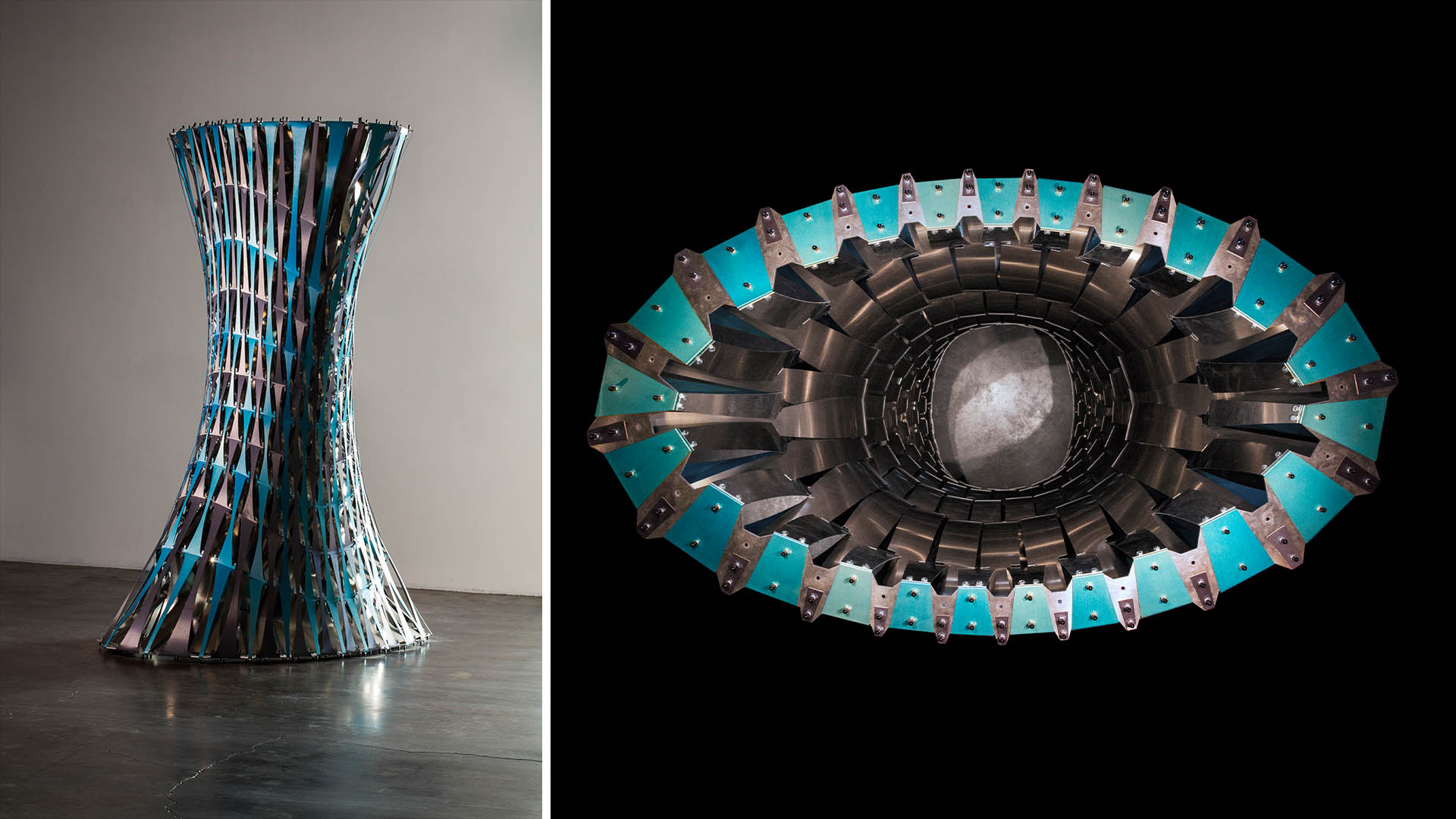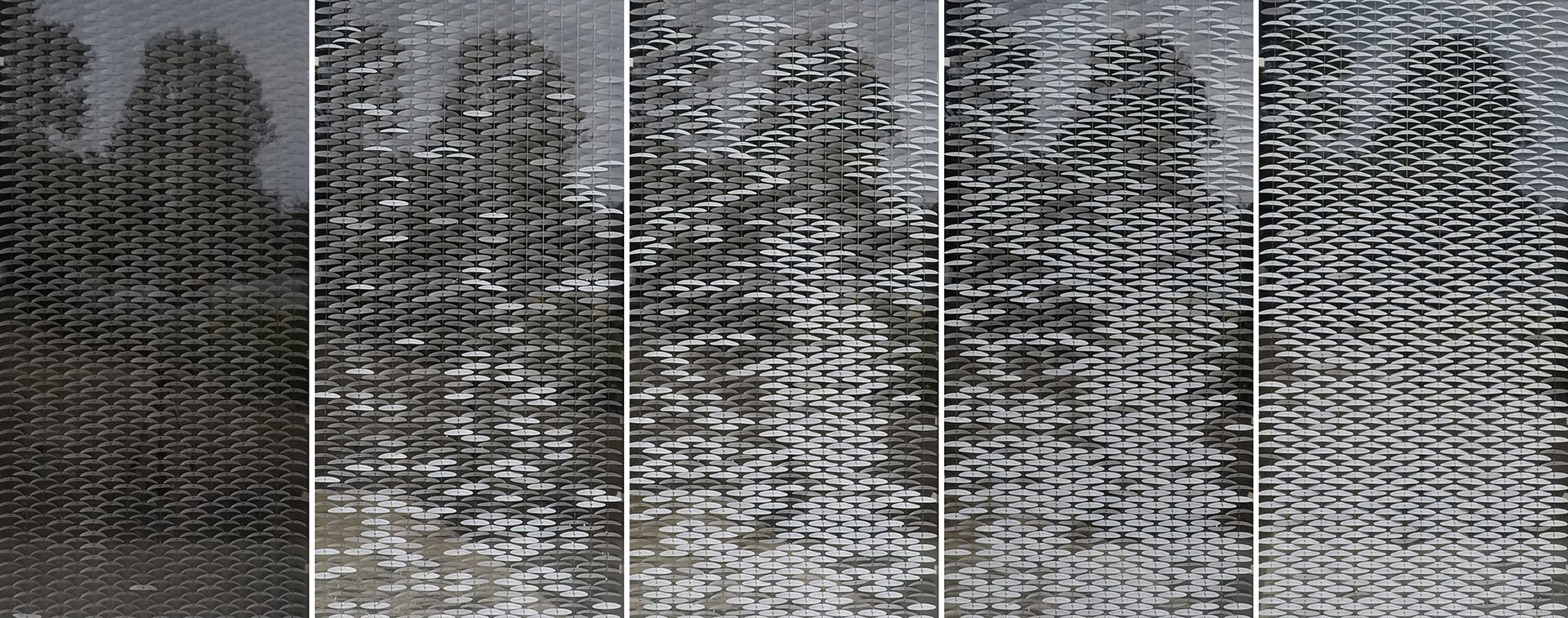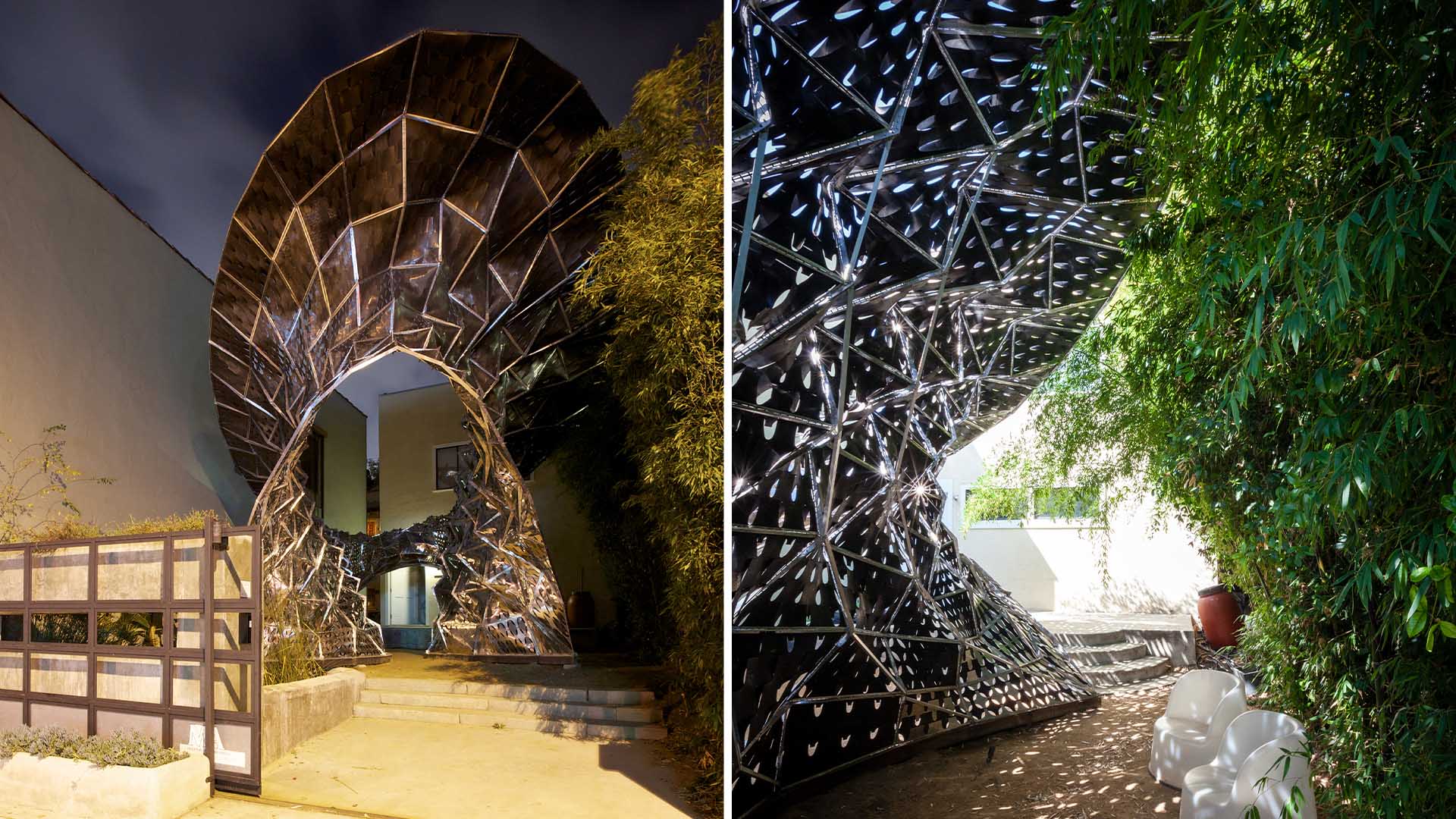
Responsive Facades and Smart Materials: Doris Sung’s Research with Thermobimetals
Many designers are drawn to the appeal of floor-to-ceiling glass facades, but what is gained in magnificent views is lost in energy efficiency. In order to compensate, architects currently deploy a complex web of sensors and wiring to monitor and manage the building’s energy needs. These active systems require specialized servicing and maintenance and can be quite expensive.
What if we could design with a material that could ‘self-ventilate, self-structure, self-shade and self-assemble’? By working with an intelligent system that behaves like human skin and requires no controls or energy to operate, architects can design facades that continue to contribute to daylighting and human wellbeing but come at a much lower energy cost.
We spoke with Doris Sung, founder of DOSU Studio Architecture and Director of Undergraduate Architecture Programs at the University of Southern California, about her studio dedicated to researching the potentials of smart materials.

Tell us about your academic and professional background, and how you became interested in Smart Materials and the ‘hard tech’ side of building design.
I started as a biology major at Princeton before diving into architecture at GSAPP for my Master of Architecture. While there, I challenged the tendency for building shells to be static and square and more like things we find in nature (i.e. dynamic, organic, and smart). For many years after, in my free time, I would build details and trinkets that would respond to movement, sound, light, and shape without the use of electricity or computer controls.
About 15 years ago, I was obsessed with climate change (e.g., rising sea levels, acidification of our oceans, hotter temperatures, etc.) and the need for architecture to be designed to be resilient and adaptable. As a practicing architect, I noticed there were very few high-performance products available in the building market, unlike the automobile industry. And, it appeared that we architects were beholden to engineers to develop these projects. But, the DOD, DOE, and NSF were not funding innovation in building products (even though buildings use up to 45% of all energy). The greatest amount of funding (and therefore, research) was allocated to making HVAC systems more efficient. I felt strongly that architects had to get into the game and design elements for building envelopes, assuming that the skin of the building, like human skin, could be the first line of defense to reduce the use of energy and contribute less to greenhouse gases. So, in 2005 I decided to change my client-based practice into a research-based one. Since then, I have three patents and 50+ inventions for architecture.

Your research is based largely on the behaviors of thermobimetals as a type of architectural ‘skin.’ Could you explain what this material is and your process for studying its response to temperature change.
Thermobimetal is a lamination of two alloys of metal. Each alloy has a different coefficient of expansion, so when the temperature rises, the alloys will expand at different rates. The result is a curl.
I used the curl as a sensor and an actuator to respond to the outside temperatures, heat during construction, and other heat sources. By doing so, I can get surfaces to be dynamic, higher performing, and intelligent.
In designing with thermobimetals for responsive facades, what tools do you use to develop and understand the performance of the entire system?
For design to fabrication tools, we used either CATIA or Grasshopper. For analysis, we use ANSYS, Ecotect, Kangaroo, Ladybug, and anything we can get our hands on. We also partner with several structural, civil, and MEP engineers who help with analysis, as well.
What role does geometry play and how does this impact the fabrication of your projects?
Geometry plays a huge role in our work. Not only does it impact the overall shape in consideration of lightweight structures (i.e., shell structures), it affects the tessellation of the surfaces. On one hand, the shape of the individual pieces has to be designed to perform optimally, while, on the other hand, even the smallest change can alter the behavior of the entire surface. For each project that we do, we probably version 30+ geometries for a single unit before populating a surface with those pieces. Because we rarely repeat a design, we have a huge library of thermobimetal geometries in multiple thicknesses, many of them with no purpose. Eventually, those orphans get adopted into later projects.

With TBM Designs, you have developed InVert, a window shading system that has integrated thermobimetals pieces. Tell us a little about the development of this system and its future possibilities.
This project used very thin Thermobimetal inside the cavity of a standard IGU (or insulated glass unit). When cool, the pieces are positioned to allow the maximum amount of heat and light to enter the building. When the sun warms the individual pieces, they flip to block the sun and prevent solar heat gain. Many people liken the piece flipping to butterflies fluttering. They perform like “active” fritting and allow the highest amount of natural daylight and color spectrum—both essential for human wellness–because the use of low-e coating is diminished. It’s also great because the system requires no maintenance, can operate indefinitely, and can be installed in new construction or retrofits.
Could you talk about one of your latest projects that make use of your research into smart materials and how data is used in the workflow for this project?
Currently, I’m obsessed with the outside of architecture contributing to the public health of a city. One of the projects I’m working on is the design of smog-eating panels for architectural facades. Our multidisciplinary team is designing passive surfaces to filter smog that can be deployed as bus shelters in any country at a nominal cost. With aerospace engineers, we use ANSYS as a feedback tool to inform the design. Our diverse team of architects, engineers, policy-makers, and public health experts have gotten funding from Google, the USC Center for Sustainable Solutions, and the USC School of Architecture.
Another project supported by the Headlands Center for the Arts is passive, dynamic panels that can smile at you as the temperature changes. If smiling produces endorphins to elevate happiness, and if I can get multiple people to smile multiple times of day, then I propose building facades can affect a city’s mental health. If that is the case, then this opens up a whole new area of study of architects.

